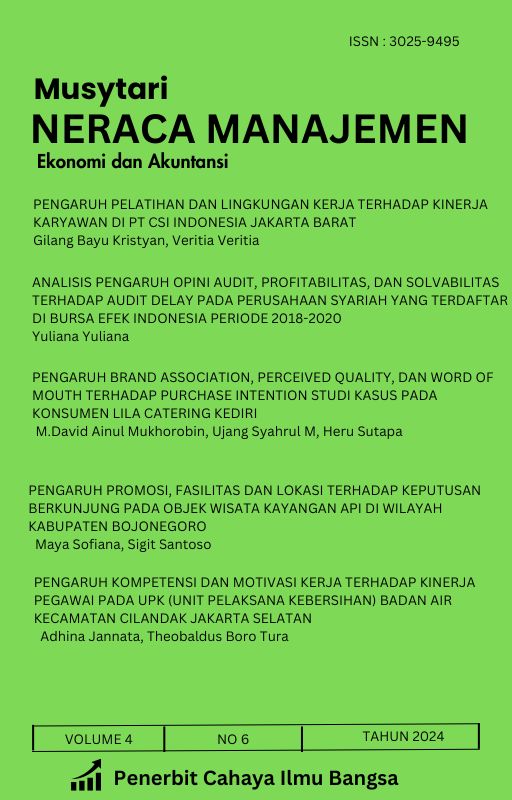STRATEGI MANAJEMEN PERSAINGAN USAHA: MEMBANGUN KEUNGGULAN DI ERA GLOBALISASI
Main Article Content
Abstract
Strategi manajemen persaingan usaha menjadi kunci utama dalam membangun keunggulan kompetitif di tengah tantangan globalisasi yang semakin kompleks. Penelitian ini menggunakan pendekatan studi kasus dengan metode deskriptif kualitatif untuk mengeksplorasi penerapan strategi diferensiasi, kepemimpinan biaya, dan responsivitas pasar yang dilakukan oleh perusahaan. Hasil penelitian menunjukkan bahwa strategi diferensiasi melalui inovasi produk, peningkatan kualitas layanan, dan penguatan citra merek mampu menciptakan nilai tambah yang membedakan perusahaan dari pesaing. Sementara itu, strategi kepemimpinan biaya berfokus pada efisiensi operasional dan optimalisasi rantai pasok untuk menawarkan harga yang lebih kompetitif. Responsivitas pasar melalui adaptasi cepat terhadap tren global dan kebutuhan pelanggan turut memastikan perusahaan tetap relevan dalam persaingan. Integrasi ketiga strategi ini terbukti efektif dalam membangun keunggulan kompetitif yang berkelanjutan, meskipun dihadapkan pada berbagai hambatan seperti kompleksitas rantai pasok dan dinamika pasar global
Competitive management strategies are a key element in building competitive advantage amidst the increasingly complex challenges of globalization. This study employs a case study approach with a qualitative descriptive method to explore the implementation of differentiation, cost leadership, and market responsiveness strategies adopted by companies. The findings indicate that differentiation strategies through product innovation, service quality improvement, and brand strengthening successfully create added value that sets companies apart from competitors. Meanwhile, cost leadership strategies focus on operational efficiency and supply chain optimization to offer more competitive prices. Market responsiveness strategies, by rapidly adapting to global trends and customer needs, ensure the company's relevance in competitive markets. The integration of these three strategies has proven to be effective in building sustainable competitive advantage, despite facing challenges such as supply chain complexity and global market dynamics.
Downloads
Article Details

This work is licensed under a Creative Commons Attribution-NonCommercial 4.0 International License.
This work is licensed under a Creative Commons Attribution-ShareAlike 4.0 International License.
References
Barney, J. B. (2021). Gaining and Sustaining Competitive Advantage (5th ed.). Pearson.
Gereffi, G., & Fernandez-Stark, K. (2016). Global value chain analysis: A primer. Center on Globalization, Governance & Competitiveness (CGGC).
Hitt, M. A., Ireland, R. D., & Hoskisson, R. E. (2020). Strategic Management: Competitiveness and Globalization. Cengage Learning.
Kotler, P., & Keller, K. L. (2016). Marketing Management (15th ed.). Pearson.
Kumar, V., & Kumar, U. (2021). Leveraging technology in the global marketplace. International Journal of Business Management.
Porter, M. E. (2008). Competitive Strategy: Techniques for Analyzing Industries and Competitors. Free Press.
World Trade Organization. (2022). Global Trade Report.

